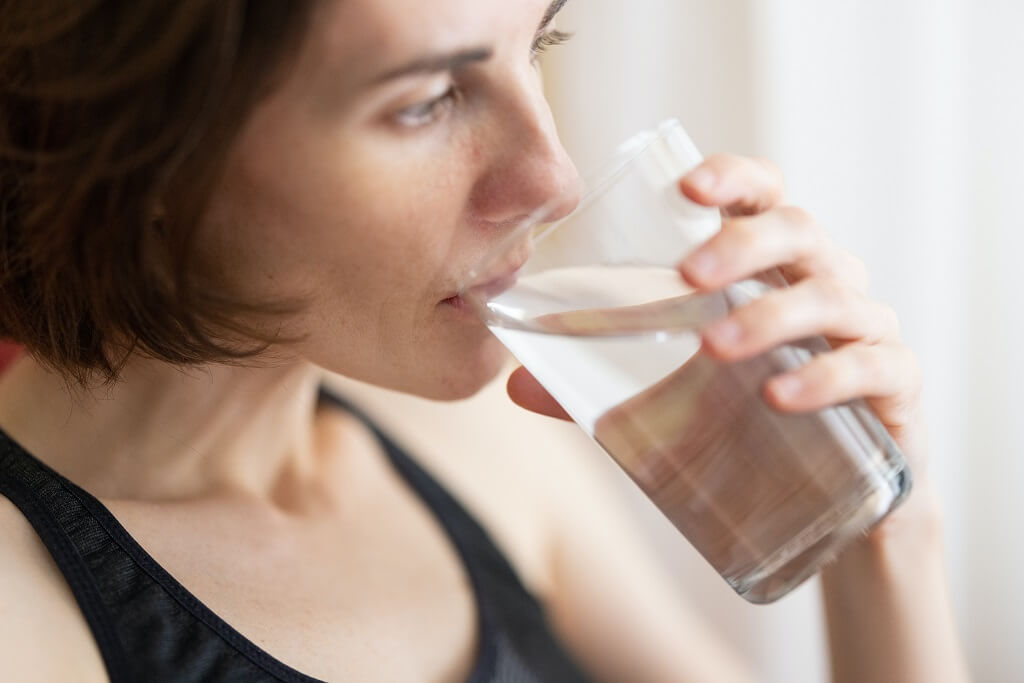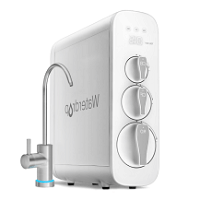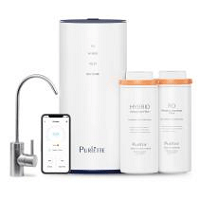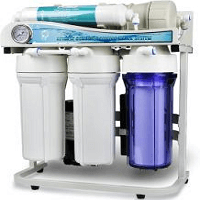With the semi-recent news over in Flint, Michigan regarding the unlivable water quality, have you been wondering what's in your drinking water?
In the United States, those of us who live in cities generally obtain our water via municipal water systems. These facilities collect water from lakes and rivers, filter and disinfect it, and then pump it to our houses in a usually safe-to-drink state. The EPA and state agencies control what may be in our drinking water and demand frequent testing of our water supplies.
Even with frequent monitoring, pollutants have the potential to penetrate our water supply. Furthermore, if you reside in a rural region and rely on well water, or if you prefer to go overseas or go camping, you may come into contact with contaminated water.
How Do You Make Water Safe to Drink?
Water treatment will comprise one or more of the following procedures, both at municipal facilities and at home:
Disinfection
Disinfection can be accomplished by adding chemicals such as chlorine or iodine, exposing water to ozone generated by high-voltage currents, exposing water to ultraviolet (UV) radiation, or boiling water for at least three minutes. Ozone is the most efficient of these methods in removing biological pollutants as well as mineral and chemical compounds, but it is only accessible at water treatment facilities.
Filtration
Filtration is capable of removing a wide range of pollutants. Mechanical filters, which remove suspended pollutants such as sand; activated carbon filters, which absorb chlorine and organic compounds; and oxidizing and neutralizing filters are also options. Because most filtration methods cannot fully eliminate microorganisms or other chemical and mineral pollutants, they are usually used in conjunction with at least one additional water treatment method. Filtration devices, on the other hand, are ideal for regular household usage and may eliminate undesirable tastes and aromas from treated water.
Distillation
Distillation is one of the most effective methods of purifying water. Water is heated until it vaporizes, leaving almost all impurities behind. Most contaminants are removed from the gaseous water as it recondenses as liquid water. Some solvents and other compounds can survive distillation procedures, however, professional water distillation is more thorough than home distillation. Because dissolved minerals are removed during the process, distilled water has a bland flavor and lacks important trace components needed for a healthy body. (As a result, we do not advocate drinking distilled water as your major source of hydration.) While home distillation equipment is available, it is costly and processes water slowly. Certain governments may also restrict the acquisition of distillation units due to the possibility of some units being used to distill alcohol.
Ion Exchange (Water Softeners)
Excess mineral content, notably calcium and magnesium, as well as iron, manganese, and other elements, can result in water with an unpleasant taste, that does not function well with soaps and detergents, and that leaves mineral deposits in pipes, faucets, and water heaters. Ion exchange works by substituting sodium for the minerals in the water. Water softeners are prevalent in many homes, but they must be maintained on a regular basis and refilled with sodium chloride (salt). These systems also increase the salt level of drinking water, so keep this in mind if you have family members who follow a low-sodium diet or have heart disease.

What Type of Home Filtration System Is Best?
The gold standard for in-house filtering, according to the Environmental Working Group, or EWG, a public health advocacy organization that has campaigned for stronger PFAS legislation, is a reverse osmosis filter, also known as a RO filter.
Water is forced across a membrane that catches impurities in reverse osmosis filters. These filters are thought to be the most effective.
What Are the Best RO Systems?
Waterdrop G3 Reverse Osmosis Water Filter System
This product helps to keep contaminants at bay. The RO System's cross filtering technique minimizes bacteria and virus accumulation.
It's useful for saving space. This Tankless design is only 5.68 inches wide, which helps conserve counter or under sink space. It features an intelligent faucet. The blue light on the faucet indicates that the filter status is 'Perfect.' Yellow denotes 'Replace Soon.' The color red denotes 'Replace Now.' It has NSF 58 and 372 certifications. NSF International evaluated and approved the RO System against the NSF/ANSI standard.
Purlette Reverse Osmosis System
With its water filter for the sink, this water purifier maintains the cleanliness and freshness of your water by removing tap water odor, stopping scaling, eliminating suspended particles, and eliminating the taste of chlorine and fluoride. Keep track of filter usage and receive personalized reminders. This Alexa-enabled smart home reverse osmosis water filter system features a 5-Stage water filtration system, including a carbon filter, to get rid of items that shouldn't be in your drinking water; unlike in water bottles, you can filter out the harmful chemicals in your water.
iSpring RCS5T RO Water Filter System
Rust, sand, chlorine, disinfection byproducts, and odor are removed in the first three phases. Heavy metals, pesticide residues, and other contaminants are removed by the 4th stage Dual-Flow RO Membrane. The fifth stage eliminates chlorine and flavors in order to enhance the quality of drinking water. With a LOW WASTE 1: 1 drain to clean water ratio, the advanced Dual-Flow 500GPD membrane saves 60% of the water. Excellent for light commercial use in restaurants, salons, laboratories, and offices, all of which benefit from high-quality RO water in different ways.






